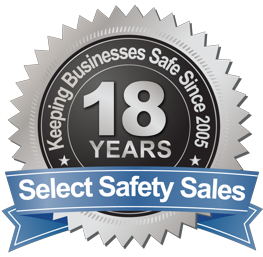Bloodborne Pathogen Precautions and PPE Use

Bloodborne Pathogen are pathogenic microorganisms that can cause a disease in human beings and are present in human blood. Hepatitis B Virus (HBV), Hepatitis C Virus (HCV) and Human Immunodeficiency Virus (HIV) are all examples.
Why are Bloodborne Pathogens included in the Occupational Safety and Health Standards?
Exposure to body fluids in the course of an employee’s duties in the performance of his/her job fall under 1910-1030 Bloodborne Pathogens.
What body fluids and materials are included in 1910-1030?
What type of exposure could require PPE?
- Splashes
- Splatters
- Droplets
- Sprays
- Hand Contact
- Vascular Access Procedures
- Touching items or surfaces that could be contaminated with bloodborne pathogens
How can an employee know if they have been exposed to bloodborne pathogens?
There is an approach to infection control when there is the possibility that there will be exposure. This approach is called Universal Precautions and it is a concept that treats all human blood and certain body fluids as if it is infectious.
Is there any special clothing or equipment that should be worn when working with body fluid?
Whose responsibility is it to purchase the personal protective equipment for the employee that is working with body fluids that could possibly be contaminated?
It is the employer’s responsibility to provide employees with personal protective equipment when there is occupational exposure to body fluids and other materials that could be infected with bloodborne pathogens.What type of personal protective equipment should be used when there is risk of exposure to body fluids?
- Masks
- Eye and Face Shields
- Goggles
- Safety Glasses with side shields
- Gowns
- Aprons
- Lab coats
- Gloves
- Protective body clothing
- Mouthpieces for resuscitation
- Bloodborne Pathogen Kits filled with protective items
What should be done with the personal protective equipment after it has been worn by an employee?
The personal protective equipment should be put in an area in the workplace that has been designated for worn equipment so that it can either be washed, decontaminated or disposed of according to instructions.
Can the equipment be taken home and washed?
Any PPE that is exposed to blood and/or body fluids can not be taken home to launder. It must be either washed on the premises or taken care of by an outside service.
Are there disinfectants to wash surfaces that could be contaminated with bloodborne pathogens?
There is the EPA-registered disinfectants that OHSA directs employers to consult regarding bloodborne pathogens. Click on this page: Brulin (BHC) Six EPA Emerging Viral Pathogen Claim Products. BruTab 6S®, Bru-Clean TbC 2®, Performex®, Performex RTU®, Patco Quat Clean IV® and Uniquat® Neutral Disinfectant 256
have demonstrated effectiveness against viruses similar to SARS-CoV-2 (COVID-19) on hard, non-porous surfaces.
Browse our selection of bloodborne pathogen kits for your safety needs.
References: United States Department of Labor
OSHA Hospital E-Tools
The information on this page is an original copyrighted article. We welcome you to link this page from your website. However, copying this article in whole or in part is strictly prohibited.
Disclaimer: We have provided this article as general information on the use of this article. We make no claims as to the accuracy or completeness of the information as it may apply to an infinite amount of conditions and situations. It is the responsibility of the person or persons reading and using this information to refer to the instructions and information provided by the manufacturer in the product package before testing or using this product. Users of this information agree to hold Select Safety Sales LLC harmless from liability of any kind relating to the use of this information.





